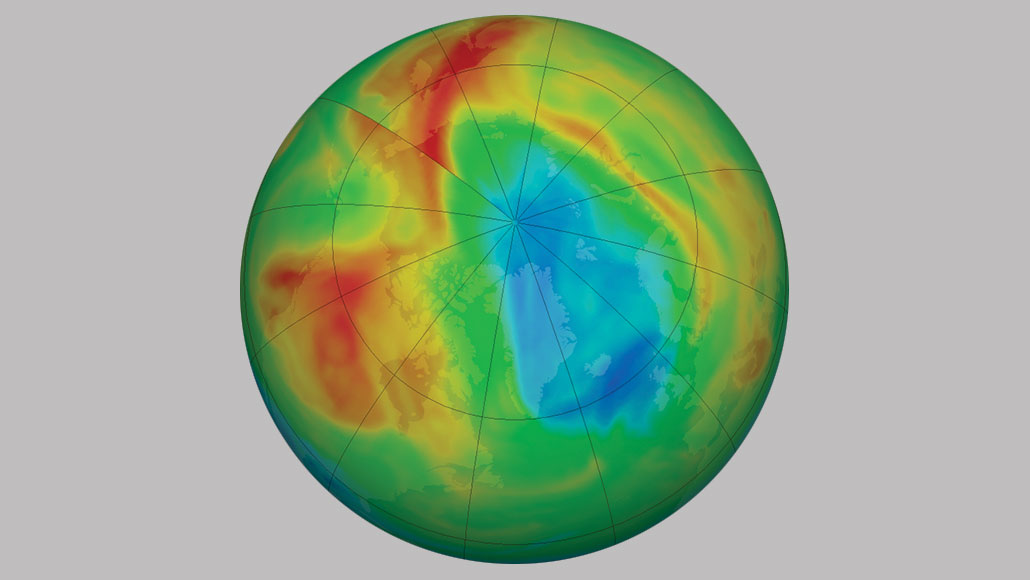
Total ozone measured in the stratosphere over the Arctic on April 4. Smallest amounts of ozone are in purple and blue; larger concentrations are in yellow and red.
NASA Ozone Watch

Total ozone measured in the stratosphere over the Arctic on April 4. Smallest amounts of ozone are in purple and blue; larger concentrations are in yellow and red.
NASA Ozone Watch